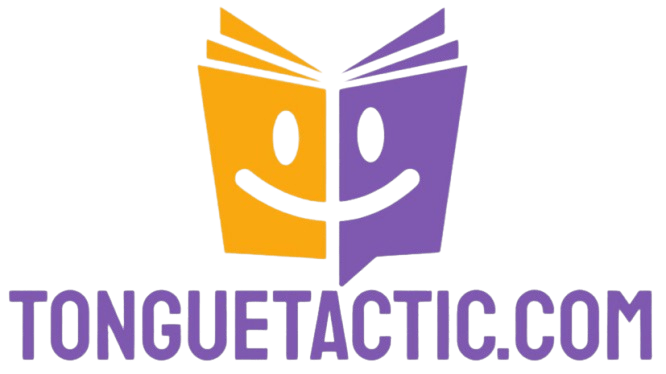how to choose the right language immersion program
Language immersion programs provide a unique and effective way to learn a new language by surrounding you with the target language in both formal and informal settings.
With countless options available, choosing the right program can feel overwhelming. This guide simplifies the essentials of language immersion, detailing what these programs include, key factors to consider such as location, intensity, and teaching methods and the various types available.
You ll learn how to evaluate the effectiveness of your chosen program through improvements in how well you speak and understand the language and through student feedback. Whether you re a parent aiming to give your child the best opportunity or an individual eager to enhance your language skills, this guide will help you navigate your options confidently.
Contents
- Key Takeaways:
- Understanding Language Immersion Programs
- Factors to Consider when Choosing a Language Immersion Program
- Types of Language Immersion Programs
- Evaluating Program Effectiveness
- Frequently Asked Questions
- What factors should I consider when choosing a language immersion program?
- How do I determine the proficiency level of the language taught in a program?
- What makes immersion programs different from traditional classes?
- What are the benefits of choosing a language immersion program over traditional language learning methods?
- Are there any age restrictions for language immersion programs?
- How can I ensure the program I choose is reputable and effective?
- What if I am not satisfied with the language immersion program I chose?
Key Takeaways:

Consider the location and culture of the immersion program to fully engage with the language and gain cultural understanding.
Assess program length and intensity, as well as the qualifications and teaching methods of instructors, to find a program that suits your learning style and goals.
Evaluate a program s effectiveness by measuring improvements in language skills and reading student reviews and testimonials to make an informed decision.
Understanding Language Immersion Programs
Language immersion programs offer a helpful approach to learning, especially for children, as they engage deeply with a second language like English or Chinese.
These programs focus on language skills and cultural understanding, making them an excellent choice for parents who want to boost their children’s academic and communication skills in today s interconnected world.
Studies reveal that these programs boost fluency and vocabulary, providing lasting benefits for both academic and personal growth.
What is a Language Immersion Program?
A language immersion program provides an educational experience where you’re taught in a target language, such as English or Chinese. This approach helps you achieve fluency and develop your language skills through real-life interactions.
This method places you in an environment where the target language is spoken consistently, creating a natural setting that reflects how native speakers communicate.
Typically, these programs are organized around daily activities that integrate language use with cultural experiences, encouraging you to engage with the language in context.
The main goal is not just to improve your vocabulary and grammar; it s also about enhancing your listening and speaking skills, which are essential for achieving true proficiency.
By focusing on hands-on learning, these immersion experiences boost your overall language acquisition, equipping you with the confidence and ability to communicate effectively in a variety of situations.
Factors to Consider when Choosing a Language Immersion Program
Choosing the right language immersion program for your children requires careful consideration of several key factors. To ensure a comprehensive experience, you should examine aspects such as the location, the level of cultural exposure, the program’s duration, the teaching methods used, and available financial aid options. Additionally, learning how to plan your language immersion travel can greatly enhance your planning process.
By evaluating these elements, you can ensure that the program you select not only aligns with your educational goals but also meets your community’s needs, ultimately providing your children with enriching opportunities for language learning and cultural engagement.
Location and Culture
The location of a language immersion program is crucial to your overall learning experience, as it determines the cultural exposure and community interactions you’ll encounter. Additionally, understanding how to choose the right language learning app can further enhance your studies.
Being situated in a culturally vibrant area opens up numerous opportunities for authentic engagement with native speakers, allowing you to practice your language skills in real-life situations. Imagine participating in local events, festivals, or markets; you’ll not only expand your vocabulary but also gain a deeper understanding of local customs and traditions.
These interactions foster a sense of belonging and community, which is vital for retaining what you’ve learned. Being close to historical landmarks or cultural institutions significantly enhances your educational experience, providing hands-on learning opportunities that no textbook can replicate.
Program Length and Intensity

The length and intensity of language immersion programs can greatly affect your academic growth and language skills. These programs come in different forms, from short summer camps to full academic year experiences, each offering unique benefits.
Want to see quick results? Short, intense programs are perfect for you! They engage you in focused language activities that prioritize conversational skills.
Longer-term programs, on the other hand, allow for deeper cultural understanding and help you develop intermediate and advanced language skills. Such programs are designed to accommodate various learning styles.
For example, if you’re a visual learner, you ll thrive in environments that use multimedia resources, while auditory learners may find interactive dialogue especially helpful.
Ultimately, the diverse options of immersion programs align with individual goals, allowing you to enhance your overall learning outcomes.
Meet Your Guides: Instructors and Their Methods!
The quality of instructors and their teaching methods are vital elements that influence your success in language immersion programs. Highly qualified instructors create an engaging learning environment that nurtures your language skills.
These educators often hold advanced degrees in linguistics or education and have specialized training in immersion techniques. Their diverse teaching strategies such as interactive storytelling, role-playing, and collaborative projects greatly enhance your comprehension and communication abilities.
Effective instructors promote cultural understanding and personalize learning experiences to suit different learning styles. These elements are key for your language development, ensuring you not only master the language but also gain confidence in your communication skills.
Cost and Financial Aid Options
When considering language immersion programs, it’s crucial to understand the costs and available financial aid options, especially if you want the best opportunities for your child. Additionally, exploring tips to enhance your language immersion experience can further enrich their learning journey.
The financial landscape can feel overwhelming, with tuition fees varying based on factors like location, institution, and program duration. Many schools aim to make these programs accessible and offer a range of financial aid options.
- Scholarships
- Grants
- Sliding-scale payments
These options can significantly ease the financial burden, promoting inclusivity and allowing a wider range of students from diverse backgrounds to participate. By making these enriching educational experiences more attainable, schools foster a vibrant and dynamic learning environment that benefits everyone involved.
Types of Language Immersion Programs
Language immersion programs come in various forms, each providing unique approaches to mastering a new language.
You can choose from full immersion, where you re completely surrounded by the language, to partial immersion, which blends classroom learning with real-world experience.
There s also a range of online and in-country options designed to meet your specific learning preferences and goals.
Full Immersion vs Partial Immersion
Full immersion programs fully surround you with the target language, while partial immersion creates a balance by incorporating some instruction in your native language. This fosters unique environments tailored to different learning styles and outcomes.
In full immersion settings, constant exposure to the language accelerates your adaptability, enhancing both fluency and comprehension at a remarkable pace. You ll dive into cultural nuances, engage in real-life conversations, and work with authentic materials, allowing you to truly immerse yourself in the language.
On the other hand, partial immersion is designed for those who might need a bit more support, gradually building your proficiency while still connecting you to your familiar linguistic roots.
Both programs offer opportunities ranging from interactive group activities to collaborative projects that foster critical thinking and social skills, paving the way for your personal growth and academic success.
Ready to start your journey? Explore your immersion options today!
In-country vs Online Programs

In-country language immersion programs offer you an authentic cultural experience. Online programs provide the flexibility to learn in a way that suits your lifestyle.
When you immerse yourself in another country, you engage directly with native speakers. You navigate local customs and participate in cultural activities, all of which greatly enhance your language skills.
This real-world practice often results in improved fluency and newfound confidence in using the language naturally.
On the flip side, online programs give you the freedom to customize your learning schedule around your personal commitments. This makes them especially beneficial if you’re juggling work or family responsibilities.
However, without that immersive context, you might miss out on deeper nuances of the language. Everyday interactions provide cultural understanding that online programs may not fully capture.
Evaluating Program Effectiveness
To evaluate the effectiveness of language immersion programs, you need a well-rounded approach. This measures not only students’ language proficiency but also their engagement and overall learning outcomes.
This thorough understanding ensures these programs prepare learners for real-world communication.
Measuring Language Proficiency Gains
Measuring language proficiency gains in students enrolled in immersion programs can be achieved through various standardized assessments and observational techniques.
These evaluations often include tests like the Language Proficiency Assessment (LPA) and the Test of English as a Foreign Language (TOEFL). Both are designed to assess proficiency across different levels.
Technology-enhanced platforms enable real-time assessments, allowing educators to monitor student progress through key metrics such as vocabulary acquisition and grammar usage.
Regular developmental evaluations, including formative assessments, are essential for understanding the impact of these programs.
By utilizing these methods, educators can effectively evaluate immersion programs, ensuring they cultivate meaningful language development and successfully meet learning objectives.
Student Reviews and Testimonials
Student reviews and testimonials provide exciting insights into the effectiveness of language immersion programs. They shed light on personal experiences and outcomes that can guide your decision-making.
These reflections spotlight strengths within the curriculum and teaching methodologies while also highlighting areas for enhancement.
Participants frequently emphasize the immersive nature of the environment. This illustrates how it facilitates language acquisition far more effectively than traditional classroom settings.
The feedback gathered acts as a catalyst for improvement, enabling program administrators to fine-tune their offerings.
Don’t miss out on what past students are saying these insights can significantly shape your learning journey! By looking into both positive and negative feedback, you can cultivate a well-rounded understanding of what to expect. This ultimately enables you to make informed choices about your language learning journey.
Frequently Asked Questions
What factors should I consider when choosing a language immersion program?

Some important factors to consider include the location of the program, the duration and intensity of the immersion, the cost, the availability of cultural activities, and the proficiency level of the language taught. For those interested in more personalized approaches, learning how to create a language immersion home study can be beneficial.
How do I determine the proficiency level of the language taught in a program?
You can typically find this information on the program’s website or by contacting the organizers. They may also offer placement tests or use the Common European Framework of Reference for Languages (CEFR) to determine your proficiency level.
What makes immersion programs different from traditional classes?
Immersion programs focus on real-life experiences and interactions, helping you learn the language in context. Traditional classes often rely on textbooks and lectures, which may not provide the same level of engagement.
Explore your options now and find the perfect program for you!
What are the benefits of choosing a language immersion program over traditional language learning methods?
Language immersion programs provide a deeply engaging learning experience.
You practice the language in real-life situations while experiencing the culture firsthand.
Are there any age restrictions for language immersion programs?
Most programs welcome participants of all ages.
However, some may have specific age limits, so check before applying.
How can I ensure the program I choose is reputable and effective?
Look up reviews or talk to past participants to gauge a program’s reputation.
Confirm it’s recognized by trusted organizations like the American Council on the Teaching of Foreign Languages (ACTFL).
What if I am not satisfied with the language immersion program I chose?
Start by discussing your concerns with the program organizers.
If you’re still unhappy, you might be able to switch programs or get a refund based on their policies.






